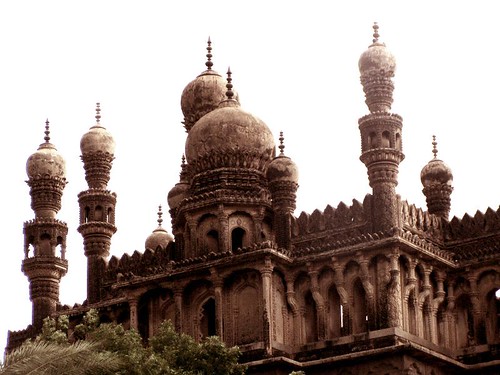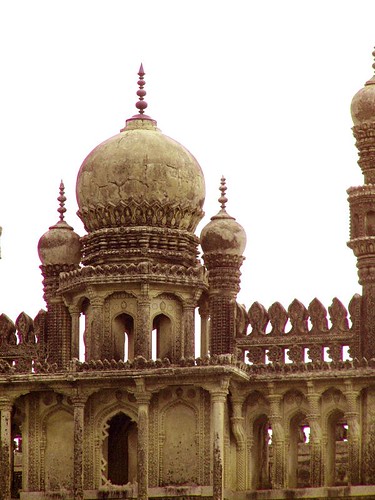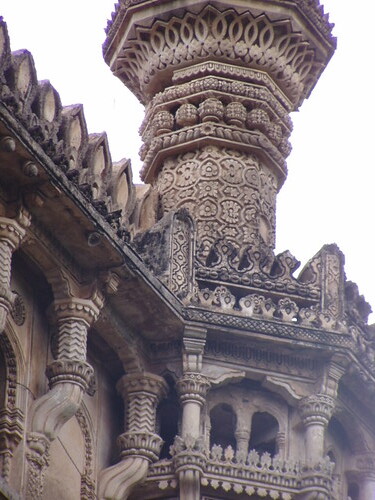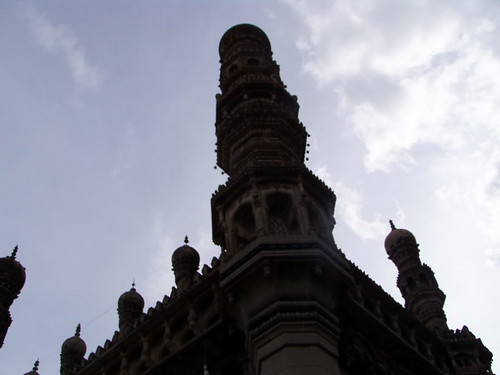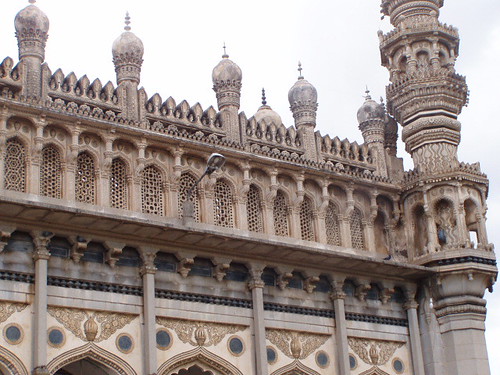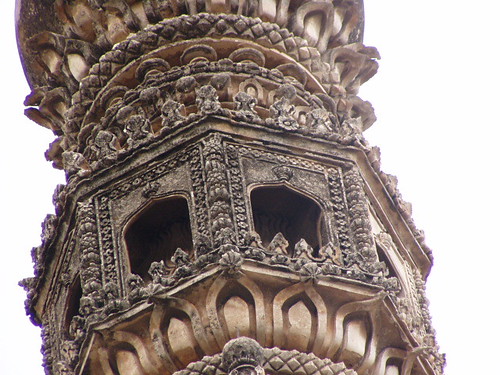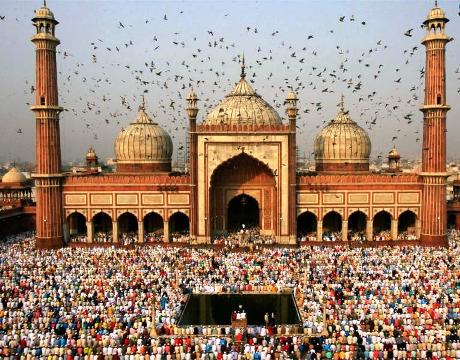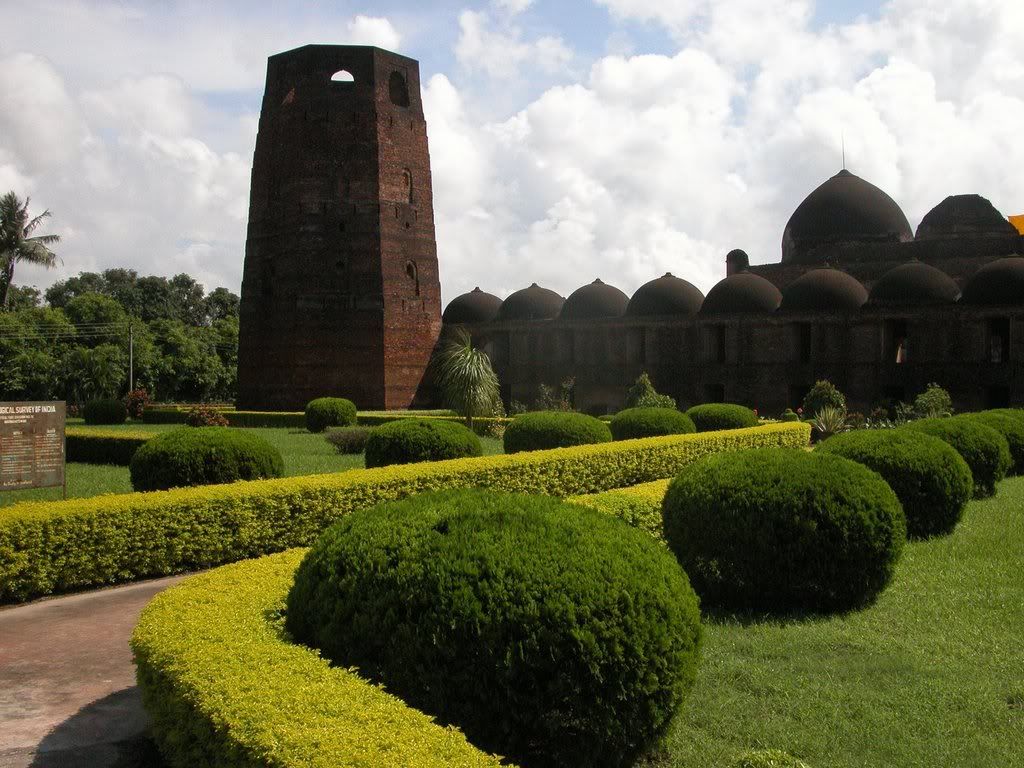What non Muslims said about:
- Prophet Muhammad [P.B.U.H.]
In the quotations below, Western writers have used the word Muhammadanism for Islam. The word Muhammadanism connotes worship of Muhammad, an absolutely unworthy statement for any learned man to use. Prophet Muhammad's mission was to propagate the worship of the One and Only God (in Arabic Allah), the Creator and Sustainer of the Universe. His mission was essentially the same as that of earlier Prophets of God. In the historical context, many such terminologies about Muhammad, Islam, and Muslims were borrowed from earlier European writings of the Eleventh to the Nineteenth century, a time when ignorance and prejudice prevailed. The quotations below attest to the facts.
Thomas Carlyle in 'Heroes and Hero Worship and the Heroic in History,' 1840
"The lies (Western slander) which well-meaning zeal has heaped round this man (Muhammad) are disgraceful to ourselves only."
"A silent great soul, one of that who cannot but be earnest. He was to kindle the world, the world’s Maker had ordered so."
A. S. Tritton in 'Islam,' 1951
The picture of the Muslim soldier advancing with a sword in one hand and the Qur'an in the other is quite false.
De Lacy O'Leary in 'Islam at the Crossroads,' London, 1923.
History makes it clear, however, that the legend of fanatical Muslims sweeping through the world and forcing Islam at the point of sword upon conquered races is one of the most fantastically absurd myths that historians have ever repeated.
Gibbon in 'The Decline and Fall of the Roman Empire' 1823
The good sense of Muhammad despised the pomp of royalty. The Apostle of God submitted to the menial offices of the family; he kindled the fire; swept the floor; milked the ewes; and mended with his own hands his shoes and garments. Disdaining the penance and merit of a hermit, he observed without effort of vanity the abstemious diet of an Arab.
Edward Gibbon and Simon Oakley in ‘History of the Saracen Empire,’ London, 1870
"The greatest success of Mohammad’s life was effected by sheer moral force."
“It is not the propagation but the permanency of his religion that deserves our wonder, the same pure and perfect impression which he engraved at Mecca and Medina is preserved after the revolutions of twelve centuries by the Indian, the African and the Turkish proselytes of the Koran....The Mahometans have uniformly withstood the temptation of reducing the object of their faith and devotion to a level with the senses and imagination of man. ‘I believe in One God and Mahomet the Apostle of God’ is the simple and invariable profession of Islam. The intellectual image of the Deity has never been degraded by any visible idol; the honors of the prophet have never transgressed the measure of human virtue, and his living precepts have restrained the gratitude of his disciples within the bounds of reason and religion.”
Reverend Bosworth Smith in 'Muhammad and Muhammadanism,' London, 1874.
"Head of the State as well as the Church, he was Caesar and Pope in one; but he was Pope without the Pope's pretensions, and Caesar without the legions of Caesar, without a standing army, without a bodyguard, without a police force, without a fixed revenue. If ever a man ruled by a right divine, it was Muhammad, for he had all the powers without their supports. He cared not for the dressings of power. The simplicity of his private life was in keeping with his public life."
"In Mohammadanism every thing is different here. Instead of the shadowy and the mysterious, we have history....We know of the external history of Muhammad....while for his internal history after his mission had been proclaimed, we have a book absolutely unique in its origin, in its preservation....on the Substantial authority of which no one has ever been able to cast a serious doubt."
Edward Montet, 'La Propagande Chretienne et ses Adversaries Musulmans,' Paris 1890. (Also in T.W. Arnold in 'The Preaching of Islam,' London 1913.)
"Islam is a religion that is essentially rationalistic in the widest sense of this term considered etymologically and historically....the teachings of the Prophet, the Qur'an has invariably kept its place as the fundamental starting point, and the dogma of unity of God has always been proclaimed therein with a grandeur a majesty, an invariable purity and with a note of sure conviction, which it is hard to find surpassed outside the pale of Islam....A creed so precise, so stripped of all theological complexities and consequently so accessible to the ordinary understanding might be expected to possess and does indeed possess a marvelous power of winning its way into the consciences of men."
Alphonse de LaMartaine in 'Historie de la Turquie,' Paris, 1854.
"Never has a man set for himself, voluntarily or involuntarily, a more sublime aim, since this aim was superhuman; to subvert superstitions which had been imposed between man and his Creator, to render God unto man and man unto God; to restore the rational and sacred idea of divinity amidst the chaos of the material and disfigured gods of idolatry, then existing. Never has a man undertaken a work so far beyond human power with so feeble means, for he (Muhammad) had in the conception as well as in the execution of such a great design, no other instrument than himself and no other aid except a handful of men living in a corner of the desert. Finally, never has a man accomplished such a huge and lasting revolution in the world, because in less than two centuries after its appearance, Islam, in faith and in arms, reigned over the whole of Arabia, and conquered, in God's name, Persia Khorasan, Transoxania, Western India, Syria, Egypt, Abyssinia, all the known continent of Northern Africa, numerous islands of the Mediterranean Sea, Spain, and part of Gaul.
"If greatness of purpose, smallness of means, and astonishing results are the three criteria of a human genius, who could dare compare any great man in history with Muhammad? The most famous men created arms, laws, and empires only. They founded, if anything at all, no more than material powers which often crumbled away before their eyes. This man moved not only armies, legislations, empires, peoples, dynasties, but millions of men in one-third of the then inhabited world; and more than that, he moved the altars, the gods, the religions, the ideas, the beliefs and the souls.
"On the basis of a Book, every letter which has become law, he created a spiritual nationality which blend together peoples of every tongue and race. He has left the indelible characteristic of this Muslim nationality the hatred of false gods and the passion for the One and Immaterial God. This avenging patriotism against the profanation of Heaven formed the virtue of the followers of Muhammad; the conquest of one-third the earth to the dogma was his miracle; or rather it was not the miracle of man but that of reason.
"The idea of the unity of God, proclaimed amidst the exhaustion of the fabulous theogonies, was in itself such a miracle that upon it's utterance from his lips it destroyed all the ancient temples of idols and set on fire one-third of the world. His life, his meditations, his heroic revelings against the superstitions of his country, and his boldness in defying the furies of idolatry, his firmness in enduring them for fifteen years in Mecca, his acceptance of the role of public scorn and almost of being a victim of his fellow countrymen... This dogma was twofold the unity of God and the immateriality of God: the former telling what God is, the latter telling what God is not; the one overthrowing false gods with the sword, the other starting an idea with words.
"Philosopher, Orator, Apostle, Legislator, Conqueror of Ideas, Restorer of Rational beliefs.... The founder of twenty terrestrial empires and of one spiritual empire that is Muhammad. As regards all standards by which human greatness may be measured, we may well ask, is there any man greater than he?"
Mahatma Gandhi, statement published in 'Young India,'1924.
I wanted to know the best of the life of one who holds today an undisputed sway over the hearts of millions of mankind.... I became more than ever convinced that it was not the sword that won a place for Islam in those days in the scheme of life. It was the rigid simplicity, the utter self-effacement of the Prophet the scrupulous regard for pledges, his intense devotion to his friends and followers, his intrepidity, his fearlessness, his absolute trust in God and in his own mission. These and not the sword carried everything before them and surmounted every obstacle. When I closed the second volume (of the Prophet's biography), I was sorry there was not more for me to read of that great life.
Sir George Bernard Shaw in 'The Genuine Islam,' Vol. 1, No. 8, 1936.
"If any religion had the chance of ruling over England, nay Europe within the next hundred years, it could be Islam."
“I have always held the religion of Muhammad in high estimation because of its wonderful vitality. It is the only religion which appears to me to possess that assimilating capacity to the changing phase of existence which can make itself appeal to every age. I have studied him - the wonderful man and in my opinion for from being an anti-Christ, he must be called the Savior of Humanity."
"I believe that if a man like him were to assume the dictatorship of the modern world he would succeed in solving its problems in a way that would bring it the much needed peace and happiness: I have prophesied about the faith of Muhammad that it would be acceptable to the Europe of tomorrow as it is beginning to be acceptable to the Europe of today.”
Michael Hart in 'The 100, A Ranking of the Most Influential Persons In History,' New York, 1978.
My choice of Muhammad to lead the list of the world’s most influential persons may surprise some readers and may be questioned by others, but he was the only man in history who was supremely successful on both the secular and religious level. ...It is probable that the relative influence of Muhammad on Islam has been larger than the combined influence of Jesus Christ and St. Paul on Christianity. ...It is this unparalleled combination of secular and religious influence which I feel entitles Muhammad to be considered the most influential single figure in human history.
Dr. William Draper in 'History of Intellectual Development of Europe'
Four years after the death of Justinian, A.D. 569, was born in Mecca, in Arabia, the man who, of all men, has exercised the greatest influence upon the human race... To be the religious head of many empires, to guide the daily life of one-third of the human race, may perhaps justify the title of a Messenger of God.
Arthur Glyn Leonard in 'Islam, Her Moral and Spiritual Values'
It was the genius of Muhammad, the spirit that he breathed into the Arabs through the soul of Islam that exalted them. That raised them out of the lethargy and low level of tribal stagnation up to the high watermark of national unity and empire. It was in the sublimity of Muhammad's deism, the simplicity, the sobriety and purity it inculcated the fidelity of its founder to his own tenets, that acted on their moral and intellectual fiber with all the magnetism of true inspiration.
Philip K. Hitti in 'History of the Arabs'
Within a brief span of mortal life, Muhammad called forth of unpromising material, a nation, never welded before; in a country that was hitherto but a geographical expression he established a religion which in vast areas suppressed Christianity and Judaism, and laid the basis of an empire that was soon to embrace within its far flung boundaries the fairest provinces the then civilized world.
Rodwell in the Preface to his translation of the Holy Qur'an
Mohammad's career is a wonderful instance of the force and life that resides in him who possesses an intense faith in God and in the unseen world. He will always be regarded as one of those who have had that influence over the faith, morals and whole earthly life of their fellow men, which none but a really great man ever did, or can exercise; and whose efforts to propagate a great verity will prosper.
W. Montgomery Watt in 'Muhammad at Mecca,' Oxford, 1953.
His readiness to undergo persecution for his beliefs, the high moral character of the men who believed in him and looked up to him as a leader, and the greatness of his ultimate achievement - all argue his fundamental integrity. To suppose Muhammad an impostor raises more problems that it solves. Moreover, none of the great figures of history is so poorly appreciated in the West as Muhammad.... Thus, not merely must we credit Muhammad with essential honesty and integrity of purpose, if we are to understand him at all; if we are to correct the errors we have inherited from the past, we must not forget the conclusive proof is a much stricter requirement than a show of plausibility, and in a matter such as this only to be attained with difficulty.
D. G. Hogarth in 'Arabia'
Serious or trivial, his daily behavior has instituted a canon which millions observe this day with conscious memory. No one regarded by any section of the human race as Perfect Man has ever been imitated so minutely. The conduct of the founder of Christianity has not governed the ordinary life of his followers. Moreover, no founder of a religion has left on so solitary an eminence as the Muslim apostle.
Washington Irving 'Mahomet and His Successors'
He was sober and abstemious in his diet and a rigorous observer of fasts. He indulged in no magnificence of apparel, the ostentation of a petty mind; neither was his simplicity in dress affected but a result of real disregard for distinction from so trivial a source.
In his private dealings he was just. He treated friends and strangers, the rich and poor, the powerful and weak, with equity, and was beloved by the common people for the affability with which he received them, and listened to their complaints.
His military triumphs awakened no pride nor vain glory, as they would have done had they been effected for selfish purposes. In the time of his greatest power he maintained the same simplicity of manners and appearance as in the days of his adversity. So far from affecting a regal state, he was displeased if, on entering a room, any unusual testimonials of respect were shown to him. If he aimed at a universal dominion, it was the dominion of faith; as to the temporal rule which grew up in his hands, as he used it without ostentation, so he took no step to perpetuate it in his family.
James Michener in ‘Islam: The Misunderstood Religion,’ Reader’s Digest, May 1955, pp. 68-70.
"No other religion in history spread so rapidly as Islam. The West has widely believed that this surge of religion was made possible by the sword. But no modern scholar accepts this idea, and the Qur’an is explicit in the support of the freedom of conscience."
“Like almost every major prophet before him, Muhammad fought shy of serving as the transmitter of God’s word sensing his own inadequacy. But the Angel commanded ‘Read’. So far as we know, Muhammad was unable to read or write, but he began to dictate those inspired words which would soon revolutionize a large segment of the earth: "There is one God"."
“In all things Muhammad was profoundly practical. When his beloved son Ibrahim died, an eclipse occurred and rumors of God 's personal condolence quickly arose. Whereupon Muhammad is said to have announced, ‘An eclipse is a phenomenon of nature. It is foolish to attribute such things to the death or birth of a human being'."
“At Muhammad's own death an attempt was made to deify him, but the man who was to become his administrative successor killed the hysteria with one of the noblest speeches in religious history: ‘If there are any among you who worshiped Muhammad, he is dead. But if it is God you Worshiped, He lives for ever'.”
Lawrence E. Browne in ‘The Prospects of Islam,’ 1944
Incidentally these well-established facts dispose of the idea so widely fostered in Christian writings that the Muslims, wherever they went, forced people to accept Islam at the point of the sword.
K. S. Ramakrishna Rao in 'Mohammed: The Prophet of Islam,' 1989
My problem to write this monograph is easier, because we are not generally fed now on that (distorted) kind of history and much time need not be spent on pointing out our misrepresentations of Islam. The theory of Islam and sword, for instance, is not heard now in any quarter worth the name. The principle of Islam that “there is no compulsion in religion” is well known.
